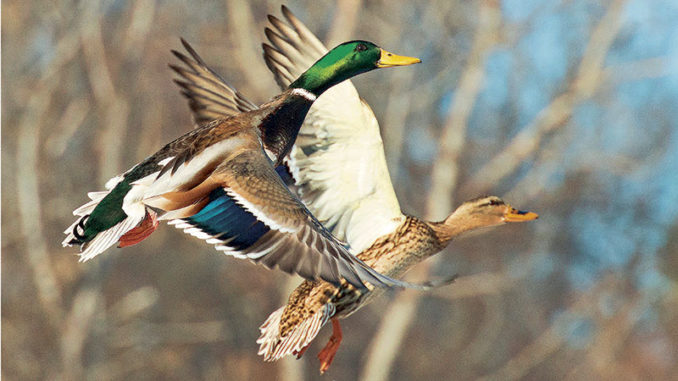
Despite drought, hopes are high for good public land duck hunting
Drought conditions this summer got the attention of so many people in Louisiana, especially state biologists who manage habitat for game and migratory birds on Wildlife Management Areas.
Some Monroe Region WMAs showed the effects with “a lot of (moist soil management) units dry, but there were encouraging reports for others,” according to veteran biologist Mitch McGee. The region’s biologist supervisor said some units held water to the point there was knee-deep water on mud flats, which bode well for the special teal season which was held Sept. 15-30 at Russell Sage WMA.
Russell Sage WMA has 13 waterfowl management units encompassing 7,550 acres, including Wham Brake and the Green Tree Reservoir.
“At the start of opening day, we might have had 70 percent capacity at Wham Brake,” McGee said. “We’ll try to get closer to 100 percent by Christmas Day. I would say on that area it does have a good watershed so it doesn’t take much rain.”
“Basically, now we just need the fall and early winter to get wet and rain on us so we can start pumping. Right now it’s way too dry to do artificial flooding. I’m optimistic. I think it’ll start off dry, which is normally the case, then we start getting rains.”
In southeast Louisiana, James Donovan has been monitoring the dry spell on the Hammond Region WMAs. Manchac WMA was “kind of dry” until east winds intervened and pushed the water up the week before he spoke about 2023-24 prospects in late August.
Donovan, Hammond Region WMA biologist supervisor, said, “I think, waterwise, everything will be fine for these coastal properties.”
He was oh-so hopeful hurricanes would continue to be a no-show in this part of the Gulf for the rest of 2023.
“After Ida, we could use another year without a hurricane,” he said. “Everything’s coming back. SAV, including milfoil and wigeon grass, are coming back on Manchac, wigeon grass on Biloxi.”
Hurricane Ida, which made landfall on Aug. 29, 2021, actually did duck hunters a favor when it hit southeast Louisiana. Donovan said it pushed out invasive water hyacinth and giant salvinia, which hasn’t come back in force at Manchac WMA, and that allowed for the growth of SAV.
As a result, duck hunters have much more access on Manchac WMA.
McGee, Donovan and biologists in the other five regions are ready to see what the new season brings.
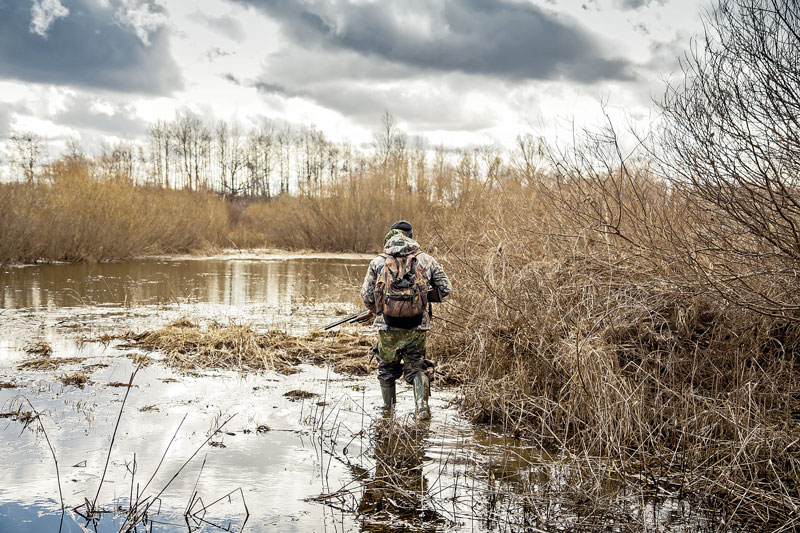
Hammond Region 2023-24 Outlook
Top WMA Waterfowl Harvest Numbers for 2022-23
Pearl River WMA: 3,065 ducks reported (0.9 ducks per hunter effort)
Manchac WMA: 1,832 ducks reported (1.9 ducks per hunter effort)
Biloxi WMA: 920 ducks reported (2.6 ducks per hunter effort)
The Hammond Region WMA’s biologist usually duck hunts on the Delta Wildlife National Refuge and Pass-a-Loutre WMA, both within range of a family camp in Venice.
James Donovan’s full-time attention, however, is devoted to the WMAs he oversees in southeast Louisiana, namely Pearl River WMA, Maurepas Swamp WMA, Manchac WMA and Biloxi WMA. He and his staff were optimistic going into the special teal season in mid-September and the regular waterfowl hunting season in the East Zone.
They were hoping Mother Nature would give the region a break from the drought and spare it from hurricanes.
“I’m hoping we have a good season. It’s always crunch time in September. We’ll see what’s in the cards,” Donovan said from his Hammond office, once again wishing against even one hurricane making it to the state’s coast.
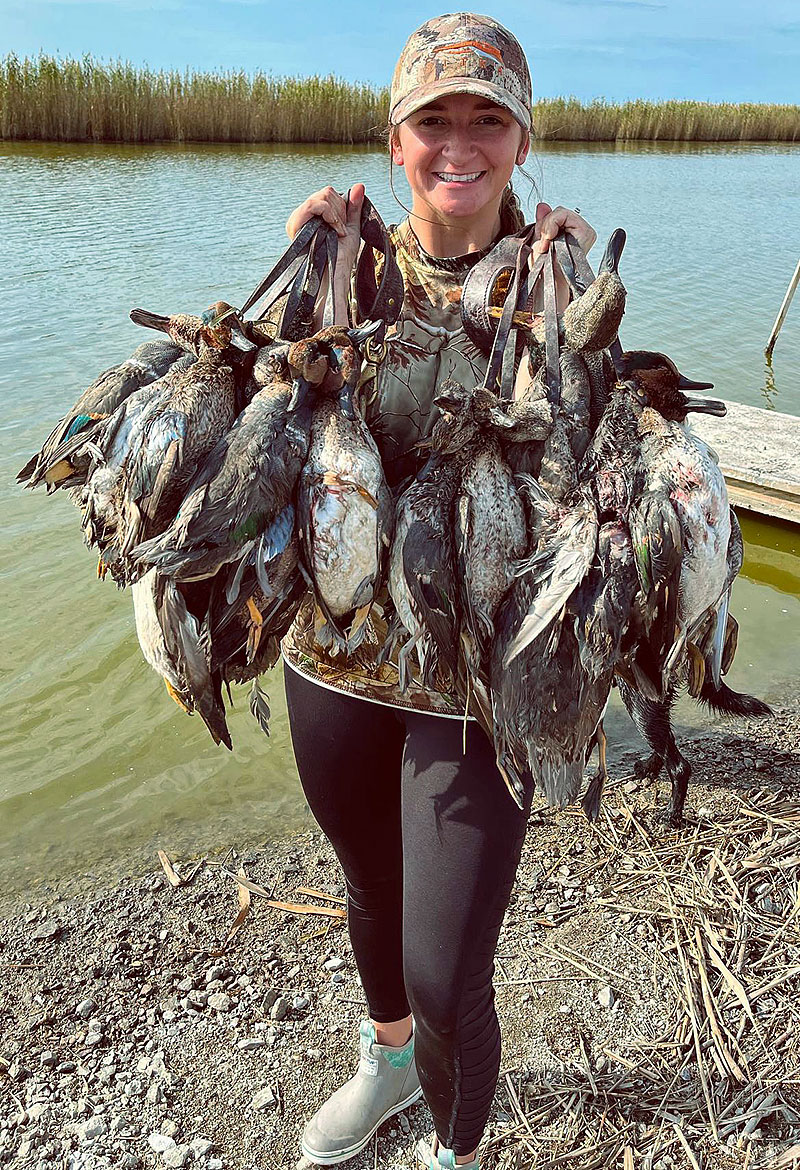
Donovan said Pearl River WMA’s waterfowl habitat was “looking good” for the special teal season. He’s hopeful it’s in even better shape for the East Zone opener Nov. 18.
“It’s a popular wood duck destination, too. That’s the most popular,” he said, adding duck hunters who don’t have a boat can hunt sloughs and backwater areas that typically have the groceries for gadwall, blue-winged teal and green-winged teal, the most frequently harvested species on the WMAs.
There also have been many successful duck hunts over the years in the marsh south of U.S. 90 on Pearl River WMA, Donovan said. However, a DOTD project to remove and replace three condemned bridges in the area has closed the LDWF’s Middle River boat launch along the Pearl River. There are other access points, he added.
Pearl River WMA’s 2022-23 duck harvest was 3,065, up from 2,353 in 2021-22, tops among Hammond Region WMAs. Following were Manchac WMA, where 1,832 ducks were harvested, and Biloxi WMA, which counted 920 ducks.
Traditionally, the most consistent duck hunting is during the first hour after legal shooting time.
Lafayette Region 2023-24 Outlook
Top WMA Waterfowl Harvest Numbers for 2022-23
Spring Bayou WMA: 2,923 ducks reported (1.9 ducks per hunter effort)
Sherburne WMA: 2,032 ducks reported (1.2 ducks per hunter effort)
Richard K. Yancey WMA: 1,725 ducks reported (1.3 ducks per hunter effort)
Pomme de Terre WMA* : 1,167 (2.4 ducks per hunter)
(*) Best duck per hunter average in the Lafayette Region in 2022-23
A slight shuffle among the top three Lafayette Region WMAs for duck harvests in 2022-23 showed Sherburne WMA in the Atchafalaya Basin moving into the second-most productive area over Richard K. Yancey WMA.
Spring Bayou WMA, with a 2022-23 harvest of nearly 3,000 ducks, remained No.1 among Lafayette Region WMAs through the 2020s. The 12,506-acre WMA in Avoyelles Parish is still ultra-popular among duck hunters, many who attribute their success to arriving very early, finding a hole in the woods and staying as late as possible legally.
There were 600 more ducks harvested on Spring Bayou WMA last season than in 2021-22 (2,923 to 2,323), Tony Vidrine, LDWF biologist manager, reported. However, the biggest jump in harvest totals on the Lafayette Region’s WMAs was an eye-opening 1,253 more ducks downed in 2022-23 than during the previous season at Sherburne WMA (2,023 to 779).
Vidrine, who retired this past summer, pretty much called it last year in his preseason report for Louisiana Sportsman. Sherburne WMA’s South Farm, he said, was ready with prime vegetative growth thanks to continued efforts from his staff during the growing season.
Vidrine also correctly predicted the Des Ourses swamp inside Sherburne WMA should have favorable water conditions for waterfowl and it did in 2022-23.
Richard K. Yancey WMA checked in last season with a total duck harvest of 1,725, followed by Pomme de Terre WMA with 1,167 and a region-high of 2.4 ducks per hunter. Top Lafayette Region WMAs perennially attract mostly wood ducks, shovelers and gadwalls.
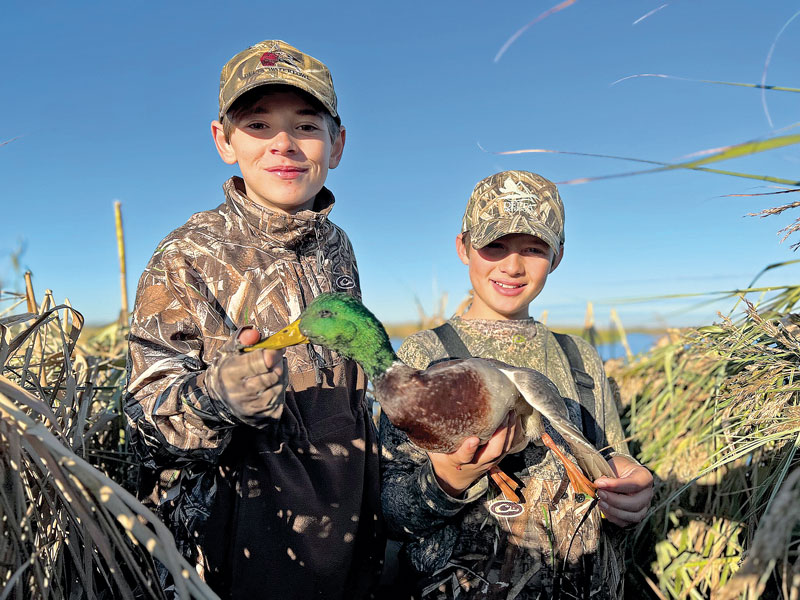
Lake Charles Region 2023-24 Outlook
Top WMA Waterfowl Harvest Numbers for 2022-23
Clear Creek WMA: 41 ducks reported, 25 hunter efforts, 1 duck per 1,282 acres (1.6 ducks per hunter effort)
Sabine Island WMA: 12 ducks reported, 31 hunter efforts, 1 duck per 722 acres (1 duck per 3 hunter efforts)
Peason Ridge WMA: 8 ducks reported, 7 hunter efforts, 1 duck per 9,289 acres (1 duck per hunter effort)
Fort Polk WMA: 2 ducks reported, 31 hunter efforts (1 duck per 16 hunter efforts)
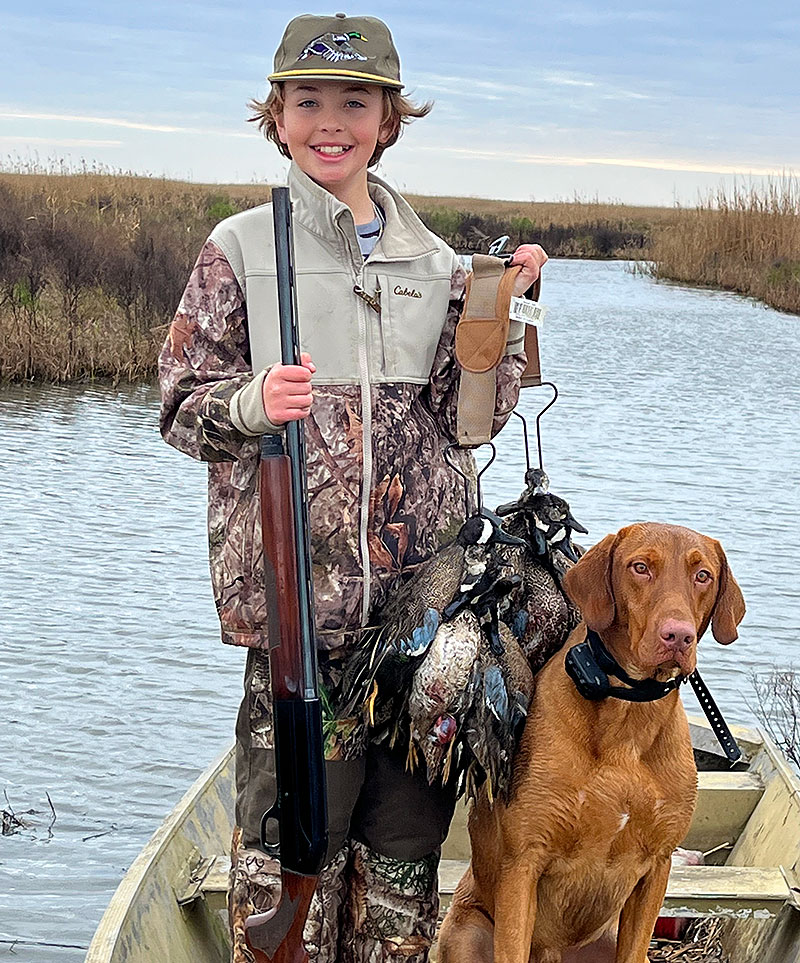
Lake Charles Region WMAs are known for prime hunting for deer, squirrels, rabbits, etc. Not so much for their duck hunting.
“Region 5 is more of an upland public hunting area with fewer waterfowl opportunities,” veteran LDWF biologist regional manager Wendell Smith said when he submitted his outlook for the Lake Charles Region WMAs.
Smith likely won’t get an argument from duck hunters who have frequented the region’s WMAs in the past. For example, the duck harvest numbers last season tell the tale:
Clear Creek WMA led the way with 41 ducks taken, up six from 2021-22. That was followed by Sabine Island WMA, where 12 ducks were harvested, down from 18 in 2021-22; Peason Ridge WMA, where eight ducks were taken, down from 17 in 2021-22, and Fort Polk WMA, where somebody killed two ducks in 2022-23.
Sabine Island WMA’s main draw for waterfowlers continues to be wood ducks, which feed in the sloughs and can be shot when they go airborne. It is accessible by boat only and it is tidal-influenced, so pay attention to turning off into a bayou, Smith advises.
Minden Region 2023-24 Outlook
Top WMA Waterfowl Harvest Numbers for 2022-23
Bodcau WMA: 1,057 ducks reported, 1,036 hunter efforts (1.02 ducks per hunter effort)
John Franks WMA: 734 ducks reported, 388 hunter efforts (1.9 ducks per hunter effort)
Loggy Bayou WMA: 277 ducks reported, 266 hunter efforts (1.04 ducks per hunter effort)
Talk about an auspicious beginning.
While it lacks a long, storied history for duck hunting success compared to Bodcau WMA and Loggy Bayou WMA, John Franks WMA made quite an impression in its first year online, so to speak, according to Jeff Johnson, a 22-year veteran biologist with the LDWF.
Johnson, the Minden Region’s biologist manager since 2020, wrote in his report, “Bodcau and Loggy Bayou have routinely been in the mix for years in this area. John Franks WMA is a much newer WMA. While I can’t speak to it in that same historical sense as Loggy and Bodcau, I can say it made a heck of a showing its first year.”
And how. Duck hunters gave it a try and harvested 743 ducks, or 1.91 ducks per hunter effort, in 2022-23 on the public area with bottomland hardwood forest, sloughs and pastureland.
The 3,664-acre WMA in Caddo Parish is a few miles north of Shreveport. The eastern portion can be accessed via Louisiana 3049/Dixie Shreveport Road while the western end is accessible via U.S. 71.
Bodcau WMA’s duck harvest last season led all WMAs in the Minden Region. Duck hunters bagged 1,057 ducks — mostly woodies, mallards, teal and gadwall — during the 2022-23 season for 1.02 ducks per hunter effort. That harvest total was 96 more ducks than 2021-22.
After John Franks WMA’s 743 ducks, Loggy Bayou WMA checked in with 277.
Johnson reported waterfowlers who hunt those WMAs usually make early morning hunts, which is when many wood ducks get shot.
“Other species, when here in decent numbers, can sometimes be a little better to hunt later in the morning,” he wrote, adding any time new ducks arrive on the WMAs is prime time to hunt.
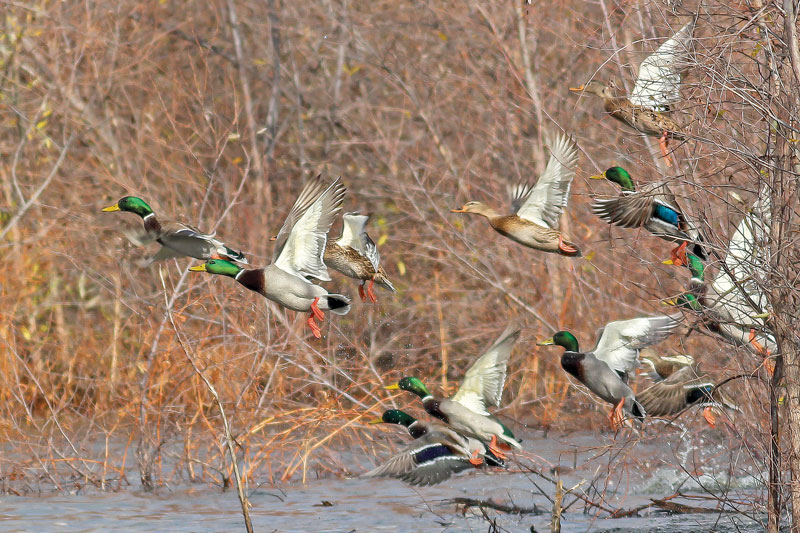 Monroe Region 2023-24 Outlook
Monroe Region 2023-24 Outlook
Top WMA Waterfowl Harvest Numbers for 2022-23
Russell Sage WMA: 6,945 ducks reported, (1.89 ducks per hunter effort)
Boeuf WMA: 3,915 ducks reported, (1.80 ducks per hunter effort)
As we previously mentioned, drought was on Mitch McGee’s mind while talking about duck hunting prospects on the Monroe Region WMAs, particularly Russell Sage WMA. However, he was thinking about a drought two years ago.
Dry weather evidently led to the low number of ducks harvested — 1,562 — in 2021-22 at the sprawling public area in Morehouse, Ouachita, Richland and Caldwell parishes. The duck harvest numbers “skyrocketed” last season to 6,945 ducks with an average of 1.89 ducks taken per waterfowler.
McGee, the region’s biologist supervisor and a 13-year veteran with LDWF, wasn’t that surprised by the increase.
“Every year’s a little different. Last year we got good rains and had a really wet period,” he said, noting a monthly average of 15 to 20 inches during the stretch in late summer/fall 2022.
As for this year, McGee reminded duck hunters to keep in mind that the Green Tree Reservoir, as well as the Bean Field and Pintail Alley on Russell Sage WMA, are flooded artificially and that hinges on the water level in Bayou Lafourche Canal.
“All infrastructure is ready to go well before duck season but the Canal dictates when and how much water may be put on the waterfowl impoundments,” McGee wrote in his annual report for Louisiana Sportsman.
Russell Sage WMA and Boeuf WMA, where 3,915 ducks were harvested last season by 2,164 waterfowlers, are the most popular and most successful WMAs to hunt in the Monroe Region. And they are large enough for duck hunters to spread out, especially Wham Brake, which checks in at 4,000 acres at full capacity.
Boeuf WMA has a 1,962-acre green tree reservoir, plus two shallow water and moist soil areas totaling 3,875 acres known as Crowfield and Topan.
Wood duck hunting can be extremely successful most seasons. However, mallard harvests are down compared to 20 years ago.
McGee recommends duck hunting during the week and to put in a little scouting time.
Pineville Region 2023-24 Outlook
Top WMA Waterfowl Harvest Numbers for 2022-23
Dewey W. Wills WMA: 6,170 ducks reported (1.6 ducks per hunter effort)
Alexander State Forest WMA: 168 ducks reported (0.9 ducks per hunter effort)
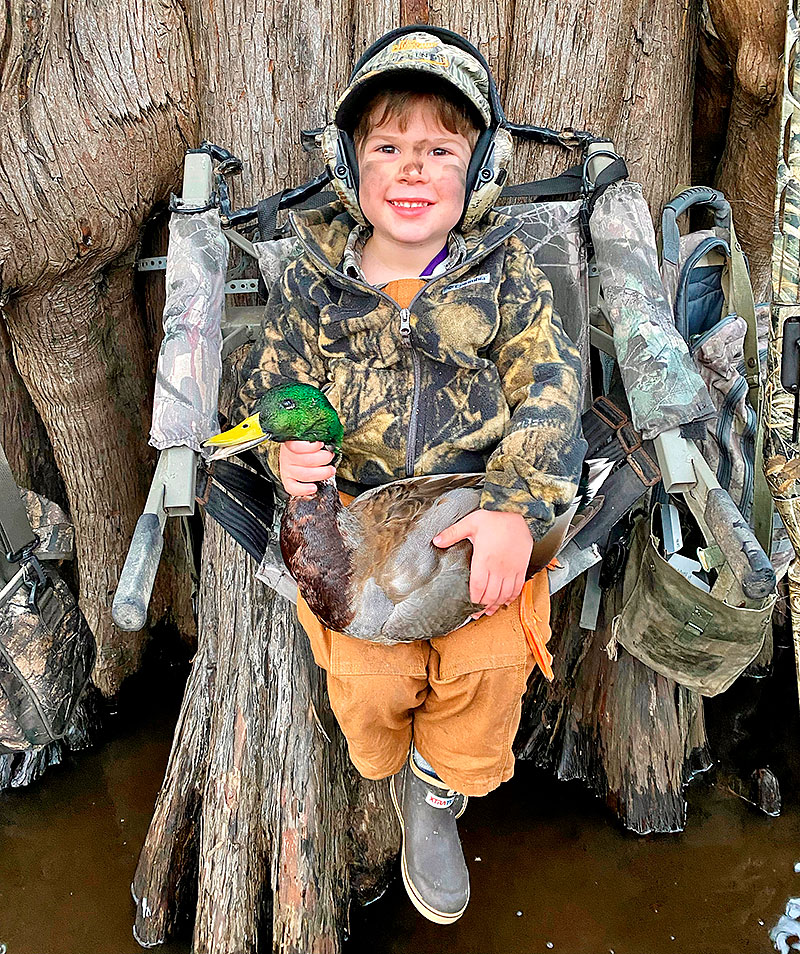
Sloughs, moist soil flats, borrow pits, flooded oak flats, impoundments.
What ducks or duck hunters wouldn’t thrive in an area with waterfowl habitat like that on Dewey W. Wills WMA? The WMA typically rewards waterfowlers with fair to good action, particularly late in the second split, according to Cliff Dailey, LDWF biologist manager for the Pineville Region WMAs since 2013.
“Temperatures and availability of floodwater are usually more favorable later in the season. Hunters should be set up by shooting time and try to hunt until at least 9 a.m,” Dailey wrote in his waterfowl report for Louisiana Sportsman. “The wood duck flight will last about 20 minutes at most, followed by arrival of the remaining dabbler species (gadwall, blue- and green-winged teal, pintail and mallards).”
The 15-year veteran biologist reminded duck hunters they must be off Dewey Wills WMA by 2 p.m. Dewey Wills WMA’s 2022-23 duck harvest soared to 6,170, an increase of 3,456 in 2021-22.
Dailey pointed duck hunters who want to try another public land in the Pineville Region to Alexander State Forest, where the primary opportunities are within the Indian Creek Reservoir. He suggested using a kayak or pirogue to place decoys and retrieve ducks. He also noted a retriever would be a big help.
Coastal Lafayette Region 2023-24 Outlook
Top WMA Waterfowl Harvest Numbers for 2022-23
Atchafalaya Delta WMA: 9,571 ducks reported, 2,755 hunter efforts (3.47 ducks per hunter effort)
Pointe-aux-Chenes WMA: 3,751 ducks reported 1,403 hunter efforts (2.67 ducks per hunter effort)
Pass-a-Loutre WMA: 3,003 ducks reported, 534 hunter efforts (5.42 ducks per hunter effort)
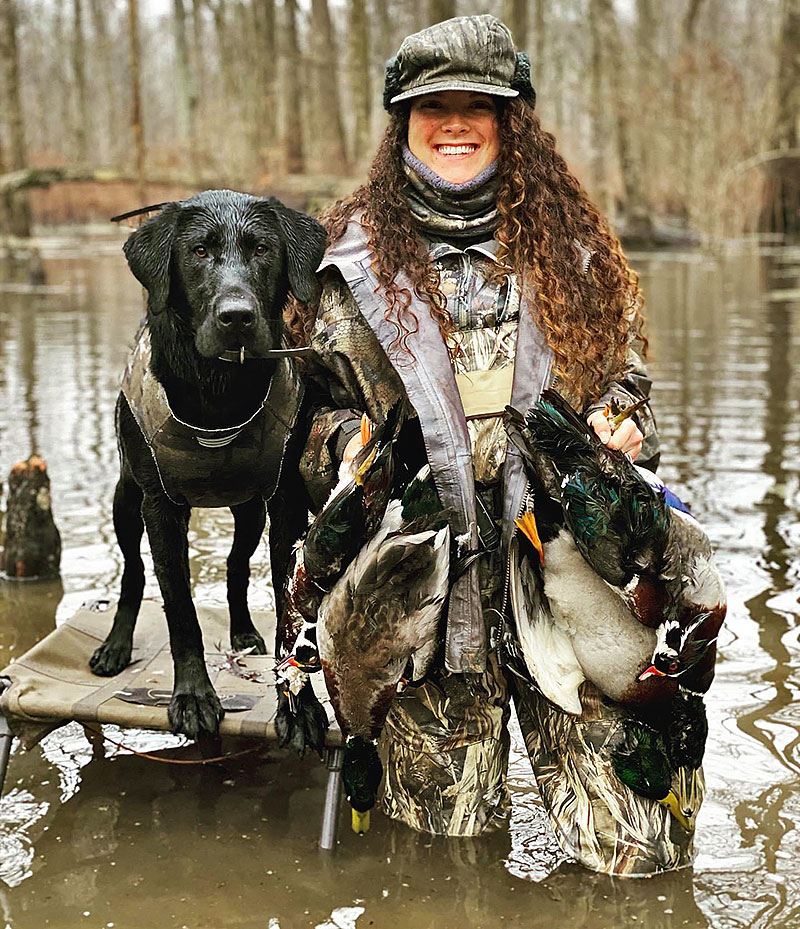
Many Atchafalaya Delta WMA duck hunters who said last season was their best season there in the past five years may be treated to another one as good or better in 2023-24.
“Atchafalaya Delta had a pretty good season,” Vaughan McDonald agreed before discussing how the table was set for the upcoming season there and at other Coastal Lafayette Region WMAs.
McDonald, biologist manager for the region with 19 years of experience with LDWF, heard from many of the duck hunters who averaged 3.5 ducks per effort while harvesting a total of 9,571 ducks in 2022-23. That total was nearly twice as many as the previous season.
Waterfowl habitat and forage conditions are favorable, largely due to shorter than usual high-river stages this spring for the Mississippi River and Atchafalaya River. That development meant less turbid waters in the coastal areas.
Barring a major storm in the latter months of the hurricane season, McDonald anticipates a fair to above average season on Atchafalaya Delta WMA, Pass-a-Loutre WMA and Pointe-aux-Chenes WMA.
“It’s been extremely hot, but no storms this year. That’s a good thing. I think if the birds come, it should be a pretty good season for us. Will the ducks come down? That’s the unknown. That’s to be determined,” he said about the fall migration.
Pass-a-Loutre WMA duck hunters harvested 3,003 ducks, or 5.4 ducks per hunter effort, last season, while Pointe-aux-Chenes WMA waterfowlers had their highest harvest in years, probably due to rainfall that put freshwater in the units to foster SAV growth.
Typically, success rates are higher during the first split on each of the three WMAs, McDonald said.
